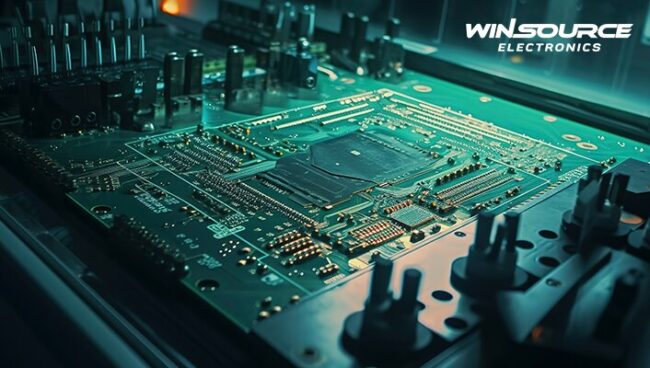
In our daily life, we use various electronic devices, such as smartphones, computers and home appliances. However, as ordinary users, do we need to pay special attention to the storage environment of electronic components? In this article, we will discuss the requirements of the storage environment for electronic components and the matters we should pay attention to in our daily use from the user’s point of view.
Table of Contents
ToggleThe importance of temperature
Electronic components are very sensitive to temperature, a key issue that requires our attention in the daily use and storage of electronic equipment. Excessive temperatures can cause electronic components to overheat, which may cause burnout, oxidation or damage. As an example, when we use our laptops in the summer heat, the electronic components may be severely damaged if the equipment is poorly cooled or exposed to high temperatures for a long time. Similarly, too low a temperature can also negatively affect the normal operation of electronic components. In the extremely cold winter, if we expose electronic devices to low temperatures, such as smartphones left outdoors for a long time in the freezing cold climate, the performance of the components may be significantly reduced, or even unable to work properly.
Control of relative humidity
The sensitivity of electronic components to humidity also requires us to give sufficient attention. High humidity environments may lead to problems such as corrosion, oxidation or short circuiting of electronic components, posing risks to the reliability and life of the equipment. As an example, if we use electronic devices in a humid environment, such as an e-reader in a bathroom, prolonged exposure to high humidity may lead to moisture, corrosion or short circuits in the components. In contrast, very low humidity may also have a negative impact on electronic components, mainly in the form of the risk of electrostatic discharge. In a dry environment, electronic devices and components are more likely to accumulate electrostatic charges, and electrostatic discharge may damage sensitive electronic components.
Prevent electrostatic discharge
Electrostatic discharge is one of the common potential problems of electronic equipment, and the damage caused to electronic components is something we need to pay special attention to in daily use. Electrostatic discharge may lead to breakdown, damage or even complete failure of electronic components. In order to avoid generating and discharging static electricity, we can take some simple but effective measures. First, the use of anti-static gloves is a common precautionary measure that can effectively reduce the generation and conduction of static electricity. In this way, we can reduce the impact of static electricity on electronic equipment and components when handling them. At the same time, when operating electronic equipment, we can use anti-static floor mats to place the equipment on a surface with conductivity in order to discharge static electricity to the ground, rather than the impact on the equipment.
Dust and corrosion protection
Keeping electronic equipment clean is the key to ensuring proper operation of components. The accumulation of dust, impurities and dirt may lead to the failure of electronic components, improper operation or even damage. Therefore, we should regularly clean equipment surfaces to ensure that they remain clean and tidy. The method of cleaning equipment surfaces can vary depending on the specific equipment and material. Usually, we can use a soft, non-woven cleaning cloth to gently wipe the device casing and screen to remove dust and dirt. Avoid using cleaners that contain alcohol or solvents, as these substances can cause damage to the surface of the device. For keyboards, mice and other external accessories, we can use a small brush or air blower to remove dust and impurities from them. In addition to regularly cleaning the surface of the device, we should also try to avoid using electronic equipment in a dusty environment.
Storage and transportation considerations
When we need to store or transport electronic equipment, we need to pay attention to some key matters. First, avoid leaving the equipment unused for a long time, because long periods of non-use may lead to a decline in the quality of components. If you need to store equipment, choose a dry, temperature-appropriate environment and make sure the equipment is in the correct packaging and protected condition. When transporting, handle the equipment with care to avoid vibration, collision or exposure to external pressure. It is best to use special boxes or shockproof materials to protect the equipment and to ensure that it is in a stable and secure position.
Although as ordinary users we may not need to delve into the technical details of electronic components, we should be aware that electronic components have high requirements for storage environments. By paying attention to temperature control, humidity regulation, anti-static measures, dust and corrosion protection, and proper storage and transportation of equipment, we can extend the service life of electronic components and ensure proper operation of the equipment. In daily use, we should make every effort to avoid exposing equipment to extreme environments and take appropriate protective measures to ensure the reliability and performance of electronic equipment. With these precautions, we can better protect and maintain our electronic devices, improve their service life, and have a better experience of using them.

COMMENTS